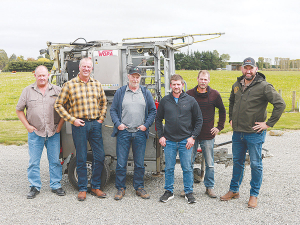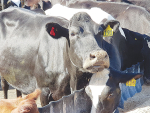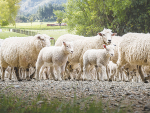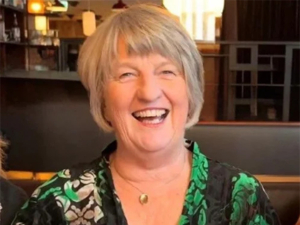The fledgling New Zealand hoof trimming industry has about between 25 to 30 active professional hoof trimmers.
Initially, preventative hoof trimming was viewed as a common and necessary practice in Europe and America, but it faced reluctance in New Zealand, according to the newly launched New Zealand Cattle Hoof Trimmers Association.
However, a growing number of farmers now recognise the benefits of this preventive approach, understanding that maintaining optimal hoof health is essential for the overall well-being and productivity of their cows.
In New Zealand, where pasture-based farms are prevalent, the importance of preventing lameness through proper hoof trimming cannot be overstated, the association says.
“The well-being of cows is directly linked to their ability to walk comfortably, impacting their productivity.
“While hoof trimming is a specialised job that takes extensive training, its significance is often underestimated. It is crucial to dispel the misconception that effective hoof trimming is solely determined by improvements in a cow’s locomotion.
“In reality, hoof trimmers play a vital role in accelerating the healing process, acknowledging that they cannot ‘fix’ cows but facilitate their self-healing.
“Poor hoof trimming however, can slow down the healing process and in the worst-case scenario, cause permanent damage to the cow.”
Drawing inspiration from European practices, where farmers are obligated to have their cows trimmed twice a year by qualified professionals to obtain a milk premium, New Zealand aims to elevate its standards in hoof health for the sustainability of the dairy industry.
Lameness holds a prominent position among the top three animal health issues in farming, alongside mastitis and infertility. It is the only health issue out of those three that is visible to the public from the roadside and this visibility underscores the urgency for quality hoof trimming by certified professionals in New Zealand.
However, the ease with which individuals can start hoof trimming businesses in New Zealand is a potential problem as the number of hoof trimmers grow. Some so-called “professional” hoof trimmers rely solely on their farming experience, potentially causing harm to cows, farmers, the hoof trimming industry, and the dairy sector.
Recognising this challenge, a proactive group of six hoof trimmers throughout New Zealand has established the New Zealand Cattle Hoof Trimmers Association. This association is poised to set a high standard for the industry and encourages members to obtain recognised qualifications and undergo re-evaluation every two years to maintain their membership. The association emphasises the importance of competency, wellmaintained equipment, the ability to provide sound advice to farmers, and staying in touch with the latest developments in hoof care.
The association will also focus on creating a platform for hoof trimmers, industry professionals and other stakeholders to collaborate and share ideas regarding lameness issues.
The launch of the association marks a significant step toward ensuring the highest standards in hoof trimming in New Zealand. By establishing clear criteria and expectations for its members, the association aims to safeguard the well-being of cows, promote the sustainability of the dairy industry, and elevate the professionalism of hoof trimmers across the nation.
To get in contact with the NZCHTA, visit www.nzchta.co.nz.


















